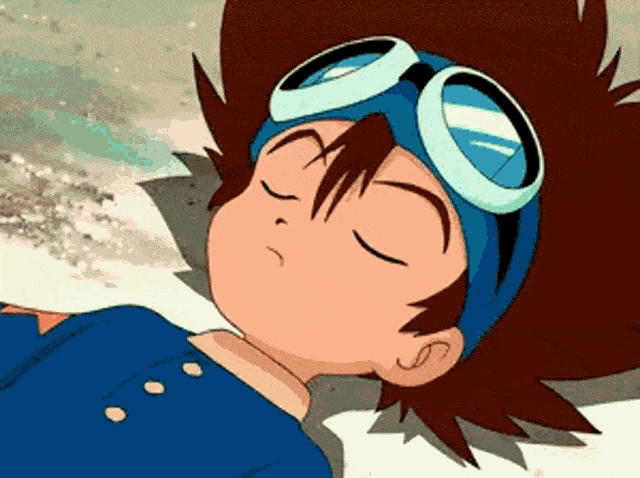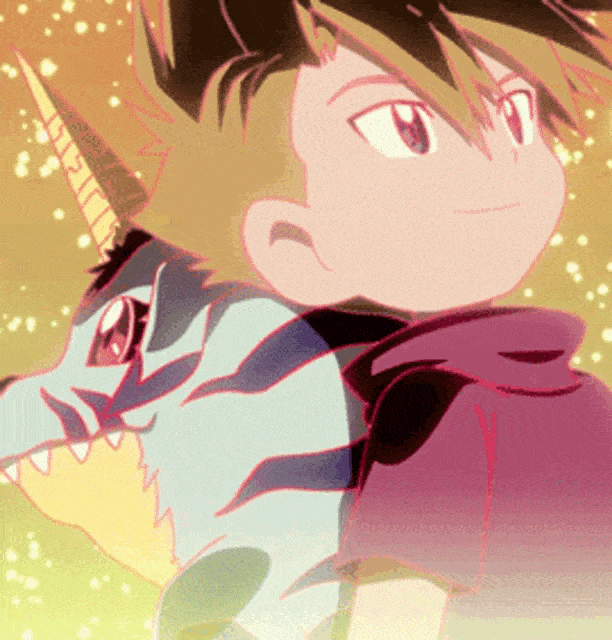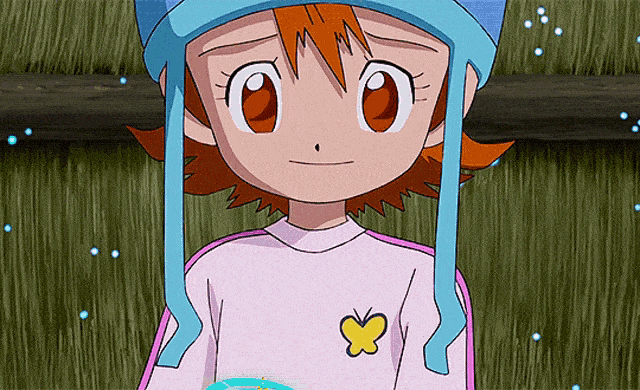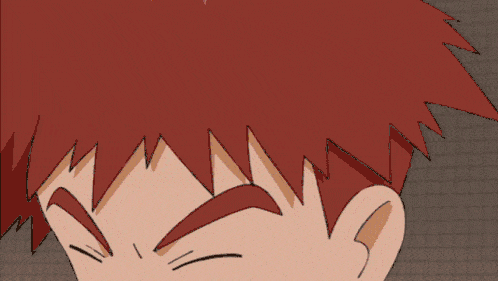




Hi! Have you watched Digimon? We hope so because today’s quiz will help you figure out which character in the series you are! Answer twenty questions and find out now!
Digimon is a Japanese media franchise encompassing virtual pet toys, anime, manga, video games, films, and a trading card game. The franchise focuses on the eponymous creatures, who inhabit a “Digital World”, a parallel universe that originated from Earth’s various communication networks.
The franchise was created in 1997 as a series of virtual pets, intended as the masculine counterpart to Tamagotchi. The creatures were first designed to look cute and iconic even on the devices’ small screens; later developments had them created with a harder-edged style influenced by American comics. The franchise gained momentum with an early video game, Digimon World, released only in Japan in January 1999. Several anime series and films including its first anime incarnation, Digimon Adventure, which is based on both video games and digital pets have been released, and the video game series has expanded into genres such as role-playing, racing, fighting, and MMORPGs.
The Digimon franchise began as a series of virtual pets created by WiZ and Bandai, intended as a masculine counterpart to the more female-oriented Tamagotchi pets. It was released in June 1997 with the name Digimon, short for Digital Monster. This device shows players a virtual pet composed entirely of data and designed to play and fight. In February 1998, the Digimon fighting game, compatible with Windows 95 and developed by Rapture Technologies, Inc., was announced. The one-shot manga C’mon Digimon, designed by Tenya Yabuno, was published in the Japanese magazine V-Jump by Shueisha in 1997.
The second generation of virtual pets was marketed six months after the launch of the first, followed by a third in 1998. Each player starts with a baby-level digital creature that has a limited number of attacks and transformations and to make the creature stronger by training and nourishing the creature; when the player is successful in a workout, the Digimon becomes strong, when the player fails, the Digimon becomes weak. Two devices can be connected, allowing two players to battle with their respective creatures, an innovation at the time, however, the battle is only possible from the moment the creature is in the child level or bigger. Playgrounds and subways were where the majority of users of the apparatus were concentrated; The virtual pet was banned in some Asian schools by being considered by parents and teachers as very noisy and violent. The first Digimons were created by Japanese designer Kenji Watanabe, influenced by American comics, which were beginning to gain popularity in Japan, and as such began to make his characters look stronger and “cool.” Other types of Digimon, which until the year 2000 totaled 279, came from extensive discussions and collaborations between the Bandai company members.
The original Digital Monster model that was released in 1997 sold 14 million units worldwide, including 13 million units in Japan and 1 million overseas, up until March 2004. By 2005, more than 24 million Digital Monster units had been sold worldwide.
Though most works in the franchise are contained within their own continuity, they all share basic setting and lore elements. Most Digimon stories begin with a human child coming into contact with a Digimon, either through accidentally entering the Digital World or encountering a Digimon who has come into the human world. The child or children will find themselves equipped with a “digivice”, a device modeled after the series’ virtual pets that enables them to empower their partner Digimon.
While some Digimons act like wild beasts, many form small societies and follow governing bodies such as the Royal Knights or Digimon Sovereign. Digimon can grow through evolution (or “digivolution” in most English-language dubs) by absorbing additional data and changing forms; the process is normally linear but there are other methods. For example, “Jogress” (a portmanteau of “joint progress”; “DNA Digivolution” in most English-language dubs) is when two or more Digimon combine into a single being. Though evolution can occur naturally, Digimon can progress faster and into stronger forms when partnered with a human.
Multiple Digimon anime series have been produced by Toei Animation since 1999. The first of these was Digimon Adventure; it began as a short film, but after its storyboard was finished, a request for the film to become a television series was made. The film debuted in theaters a day before the series debuted on TV.
The first six Digimon series were adapted into English for release in Western markets, with the first four treated as a single show under the collective title Digimon: Digital Monsters. The sixth series, Digimon Fusion, was only partially localized; its third season was never adapted into English.
Which Digimon character is your favorite? Which of them resembles you the most? Answer twenty questions and see for yourself now!